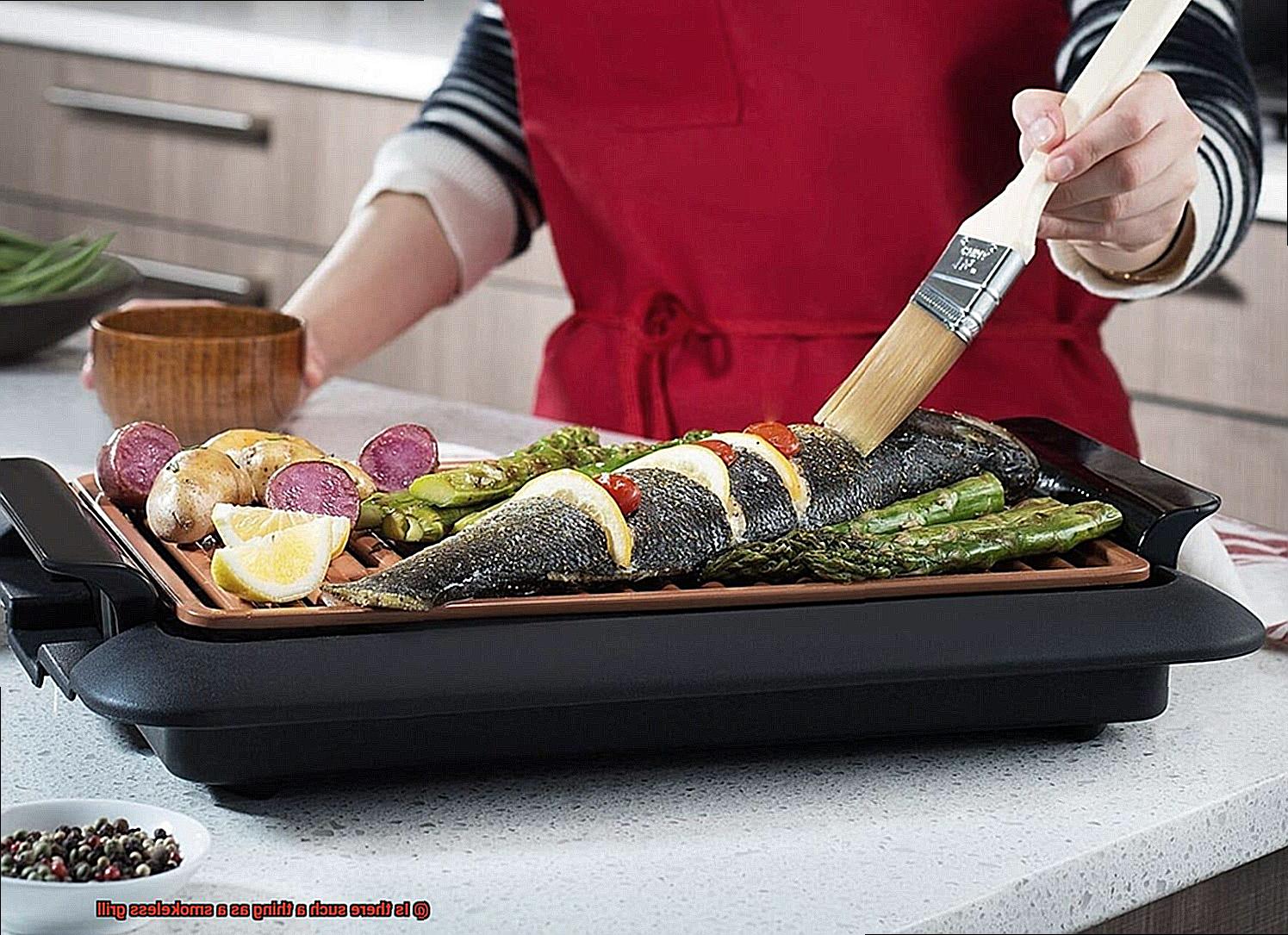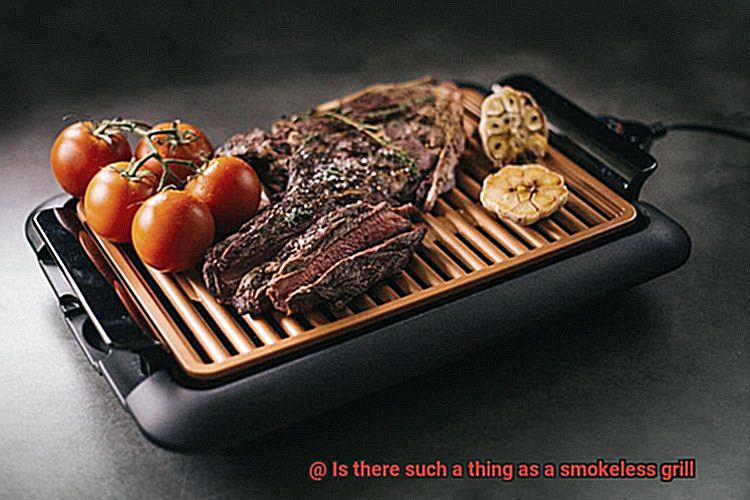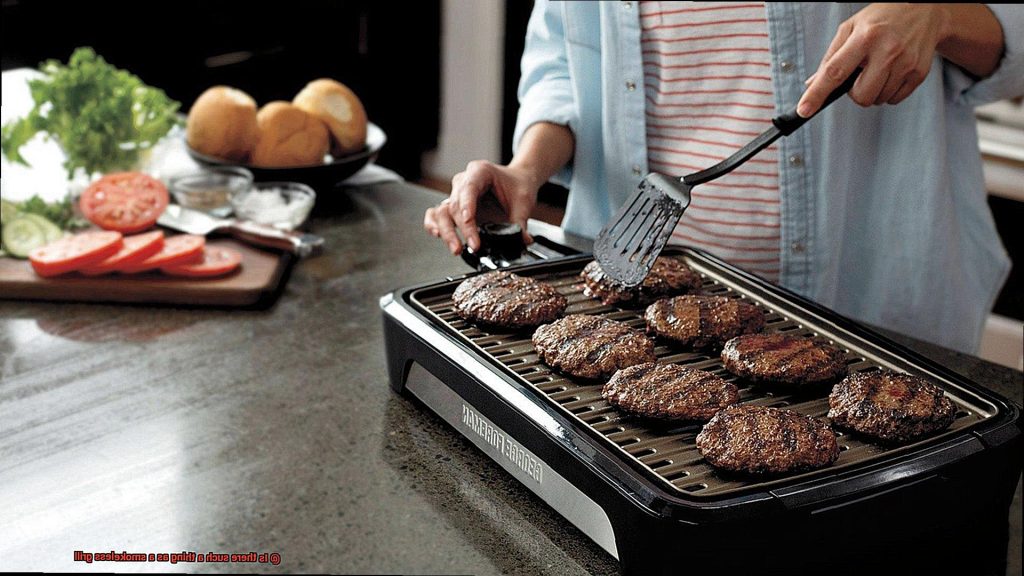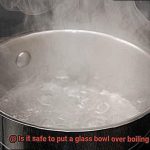Do you love grilling, but hate the smoke and mess it leaves behind? Well, guess what? Technology has come a long way, and now you can enjoy delicious grilled food without the hassle of smoke and messy cleanup. The answer lies in a smokeless grill.
A smokeless grill is designed to reduce the amount of smoke emitted during cooking, making it perfect for indoor and outdoor use. It uses advanced technology like infrared heating elements and fans to reduce smoke and odor. This means you can grill your favorite meats, vegetables, and seafood without worrying about setting off your fire alarm or annoying your neighbors.
But are smokeless grills really as good as they claim to be? Can they deliver that same smoky flavor that traditional grills provide? That’s what we’re here to find out. In this blog post, we’ll be exploring the concept of a smokeless grill – what it is, how it works, and whether it’s worth the investment.
So whether you’re a seasoned griller or a newbie looking to up their game, grab a cup of coffee (or your favorite beverage) and read on to discover all you need to know about smokeless grilling. We’ll cover everything from the best brands on the market to tips for getting that perfect sear on your steak. Let’s get started.
Contents
What is Grilling?
Grilling is the art of cooking food with dry heat from below. This method of cooking has been around for centuries and is typically done outdoors, using a grill or barbecue. However, indoor grilling options are also available.
The heat source for grilling can come from charcoal, gas, wood, or electricity. Each heat source has its own unique benefits and drawbacks. Charcoal and wood grills produce the most smoke and give food a rich smoky flavor, but they can be more difficult to control and require more cleanup. Gas and electric grills, on the other hand, are easier to use and produce less smoke, making them ideal for those with limited outdoor space.
Grilling is a popular cooking method for many reasons. Firstly, it imparts a smoky flavor to the food that many people find appealing. Secondly, it allows for quick cooking times and can be a healthy way to prepare food as excess fat drips off during the cooking process. Thirdly, grilling is often associated with summertime and outdoor gatherings such as picnics and barbecues.
There are several types of grilling techniques, such as direct heat grilling and indirect heat grilling. Direct heat grilling involves placing the food directly over the heat source, while indirect heat grilling involves placing the food off to the side of the heat source. This method is often used for larger cuts of meat that require slower cooking times.
One of the downsides of grilling is the smoke that it produces. This can cause discomfort or health problems for some people, especially those with respiratory issues. However, there are now smokeless grills available that significantly reduce the amount of smoke produced. These grills use advanced technology such as infrared heating elements and special filters to minimize smoke. They also have features such as drip trays and water pans that help to prevent flare-ups and reduce smoke.
The Dangers of Smoke from Grilling
The sizzling sound of a grill and the aroma of searing meat are often synonymous with summer. However, the smoke generated from grilling can be harmful to your health. As an expert on this topic, I want to delve deeper into the dangers of smoke from grilling and offer some tips on how to protect yourself and your loved ones.
Grill smoke contains chemicals that are hazardous to your health. Polycyclic aromatic hydrocarbons (PAHs) and heterocyclic amines (HCAs) are two harmful chemicals that can be found in smoke from burning charcoal or wood. PAHs form when fat and juices from meat drip onto hot coals, causing flames to rise and produce smoke that adheres to the surface of the food. HCAs form when meat is cooked at high temperatures, causing amino acids and creatine to react and form a carcinogenic compound. Consuming these chemicals can increase your risk of cancer.
Inhaling smoke from grilling can also cause respiratory problems, especially for those with asthma or other lung conditions. Smoke can irritate your eyes, nose, and throat, leading to coughing, wheezing, and shortness of breath. The longer you’re exposed to smoke, the higher your risk of developing respiratory problems.
To reduce your exposure to smoke while grilling, there are several precautions you can take. Firstly, use a grill with a lid to contain smoke and reduce your exposure. Secondly, avoid overcooking or burning meat by using a meat thermometer to ensure it’s cooked thoroughly without being burned. Thirdly, lean cuts of meat produce less fat and therefore less smoke when grilled. Fourthly, marinating meat before grilling can also help reduce the formation of harmful chemicals.
It’s crucial to grill in well-ventilated areas and avoid standing directly over the grill while cooking. While electric indoor grills or gas grills with lava rocks produce less smoke than traditional charcoal or wood-burning grills, it’s essential to research and compare different types of grills before making a purchase to find one that fits your needs and lifestyle.
Is There Such a Thing as a Smokeless Grill?
As a true grill master, you know the mouth-watering scent of meat sizzling on the grill is an essential part of summer. But with the smoke that comes along, grilling can pose health risks, especially for those with respiratory issues. Not to mention, it can also be bothersome for your neighbors. So, is there such a thing as a smokeless grill?
While there is no such thing as a completely smokeless grill, several types of grills claim to produce less smoke than traditional grills. Let’s take a closer look at them:
- Electric Grill: These grills use heating elements instead of flames to cook food, resulting in less smoke production compared to charcoal or gas grills. Some electric grills have built-in fans that help to further reduce smoke.
- Infrared Grill: Infrared grills use innovative technology to heat food evenly and quickly. They need less oxygen to burn and cook at higher temperatures, resulting in less smoke production.
- Indoor Grill: These grills are designed to be used indoors and often come with built-in fans or vents that help reduce smoke and odor. They are typically electric and can be used year-round, regardless of the weather outside.
It’s important to note that even though these types of grills may produce less smoke than traditional grills, they are not completely smoke-free. Cooking with any type of grill will produce some amount of smoke, so it’s crucial to follow safety guidelines when grilling.
Technology Used in Smokeless Grills
Smokeless grills are the solution. As an expert on the technology used in smokeless grills, I am excited to share with you the different technologies that make these grills efficient and convenient.
Firstly, infrared heating is one of the primary technologies used in smokeless grills. It uses electromagnetic radiation to heat up the grill plates directly, resulting in a faster cooking time and less smoke produced. Infrared heating also provides precise temperature control, ensuring even cooking and preventing overcooking or undercooking.
In addition to infrared heating, many smokeless grills use a fan or ventilation system to circulate air, reducing the amount of smoke produced. Some models even have built-in filters that capture any smoke or grease particles, making them even more efficient. With these features, you can enjoy a smoke-free grilling experience both indoors and outdoors.
Finally, the use of a drip tray is another technology used in smokeless grills. The drip tray catches any excess grease or oil that falls off the food while cooking, preventing it from dripping onto the heating elements and causing smoke. This feature also makes cleaning up after cooking much easier.
Benefits of Using a Smokeless Grill
If so, a smokeless grill may be just what you need. As an expert in this field, I can attest to the numerous benefits of using a smokeless grill that truly make it a game-changer.
First and foremost, let’s talk about health benefits. Smokeless grills do not produce harmful smoke, making them a safer alternative to traditional grills that use charcoal or gas. With a smokeless grill, you can cook your food indoors without worrying about inhaling dangerous fumes and jeopardizing your health. Plus, since they require less oil and fat to cook your food, they result in healthier meals while still ensuring that each piece is cooked to perfection.
Convenience is another significant benefit of using a smokeless grill. Traditional grills require finding a suitable outdoor space and dealing with the hassle of cleaning up after cooking. With a smokeless grill, you don’t have to worry about any of that. They are also easier to use since they come with adjustable temperature controls that allow you to cook your food to perfection with ease.

But what about taste? You might be thinking that cooking without smoke means sacrificing flavor. Not true. Smokeless grills are perfect for people who want to cook healthy meals without sacrificing flavor. In fact, they allow you to enjoy the full flavor of your food without any interference from smoke.
Lastly, smokeless grills are ideal for people who live in apartments or condos where outdoor grilling is prohibited. With a smokeless grill, you can enjoy the taste of grilled food without worrying about breaking any rules or disturbing your neighbors. Plus, since they are compact and easy to store, they’re great for small spaces.
How to Choose the Right Smokeless Grill for You
A smokeless grill may be the solution you need to enjoy your favorite grilled foods without the hassle. But with so many options available, how do you choose the right one for you? Here are some factors to consider:
Size
The size of the grill is a crucial factor in choosing the perfect smokeless grill for your needs. If you have limited space, a smaller grill may be more appropriate. However, if you plan on cooking for a large group of people, a larger grill might be necessary.
Fuel Type
Smokeless grills can use electricity, propane, or natural gas as a fuel source. If you plan on using your grill indoors, electric is the way to go. But if you want to use it outdoors, propane or natural gas might be a better choice.
Cooking Surface
The cooking surface of your smokeless grill is an essential factor to consider. Non-stick surfaces make cleaning easier, while ridged surfaces create sear marks on your food for an authentic grilled taste.
Durability
Look for a smokeless grill made from durable materials like stainless steel or cast iron. These materials will ensure that your grill lasts for many years.
Price

While it’s important to invest in a high-quality smokeless grill that will meet your needs, also consider your budget. Some models may be more expensive than others, but that doesn’t always mean they’re the best option for you.
By taking these factors into consideration when choosing a smokeless grill, you can find the perfect one for your needs and start enjoying delicious grilled food without any smoke or hassle.
Tips for Cooking with a Smokeless Grill
A smokeless grill may be the perfect solution for you. These grills use advanced technology to significantly reduce the amount of smoke produced, making them a great alternative for indoor cooking. But, to get the most out of your smokeless grill, here are some tips to keep in mind.
First and foremost, it’s important to understand that while smokeless grills emit less smoke than traditional grills, they are not completely smoke-free. Therefore, it’s still important to grill in a well-ventilated area. This will ensure that any smoke produced is quickly dispersed and doesn’t linger in your home.
One of the biggest benefits of cooking with a smokeless grill is that you can use it indoors without worrying about setting off your smoke detector. However, it’s still important to be cautious when using your grill indoors. Make sure that you have enough space around your grill and that there are no flammable materials nearby.
To ensure that your food cooks evenly and has those desirable grill marks, preheat your smokeless grill before adding your food. Additionally, use high-quality oil such as canola or vegetable oil to coat the grates before adding your food. This will prevent sticking and make cleanup easier.
If you’re cooking on a smaller smokeless grill, you may need to cook in batches to avoid overcrowding the grill. Overcrowding can lead to uneven cooking and prevent your food from getting those desirable grill marks. And if you’re unsure about the temperature of your grill, use a meat thermometer to ensure that your meat is cooked to perfection.
Finally, keeping your smokeless grill clean after each use is essential for optimal performance and longevity. Use a grill brush or scraper to remove any food particles from the grates and wipe down the exterior with a damp cloth.
YZIoNNB0mYs” >
Conclusion
In conclusion, a smokeless grill is a revolutionary solution for grilling enthusiasts who want to avoid the unpleasant smoke and mess that traditional grills leave behind. With advanced technology such as infrared heating elements, fans, and filters, smokeless grills significantly reduce the amount of smoke emitted during cooking, making them ideal for both indoor and outdoor use. Although no grill can be entirely smoke-free, smokeless grills produce substantially less smoke than their traditional counterparts.
Grilling has been a beloved cooking method for centuries. However, the harmful chemicals produced by smoking can pose health risks. Smokeless grills are designed to mitigate this risk by reducing the amount of harmful chemicals generated during cooking.
Smokeless grills offer numerous benefits such as convenience, health benefits, and delicious taste without any interference from smoke. When selecting a smokeless grill, consider factors such as size, fuel type, cooking surface, durability, and price.
To get the most out of your smokeless grill experience, it’s essential to follow safety guidelines when using it indoors or outdoors. Preheating your grill before adding food and using high-quality oil to coat the grates can help ensure even cooking and prevent sticking. Cleaning your grill after each use is critical for optimal performance and longevity.






